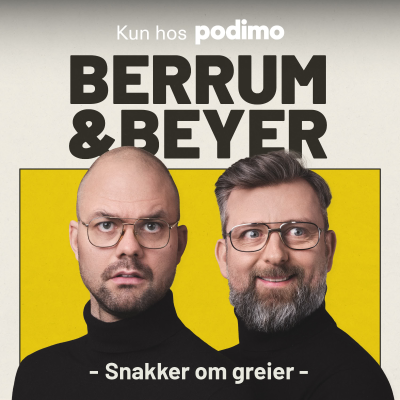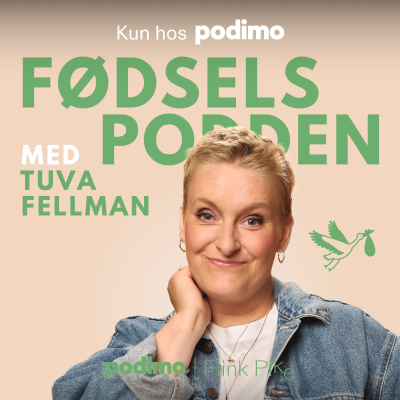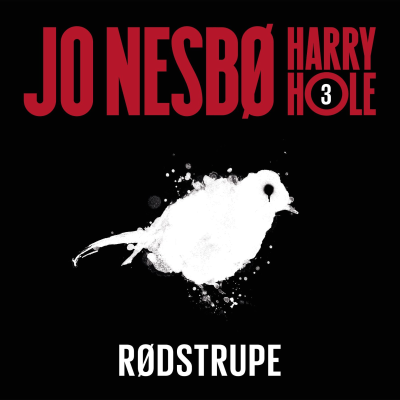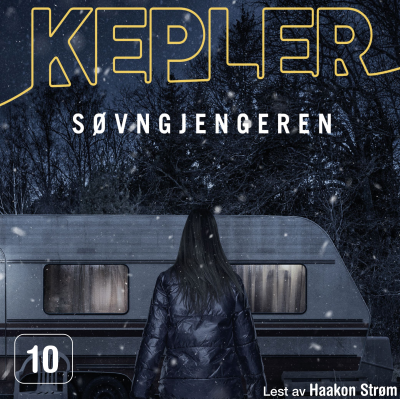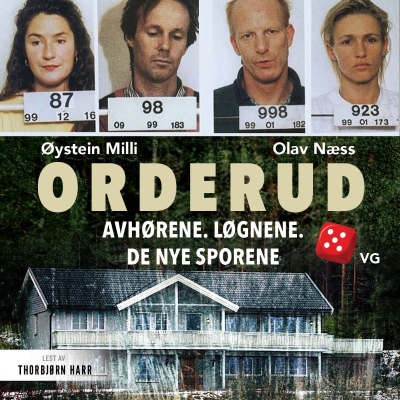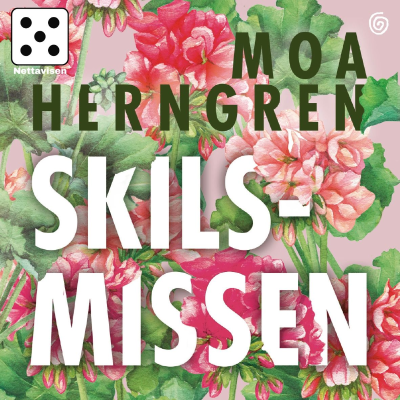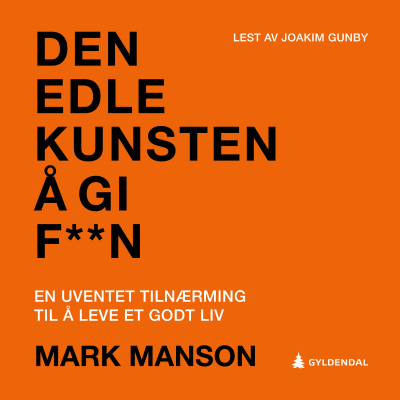
Boundaryless Conversations Podcast
engelsk
Teknologi og vitenskap
Tidsbegrenset tilbud
3 Måneder for 9 kr
Deretter 99 kr / MånedAvslutt når som helst.
- 20 timer lydbøker i måneden
- Eksklusive podkaster
- Gratis podkaster
Les mer Boundaryless Conversations Podcast
Boundaryless Conversations Podcast is an ongoing exploration of the future of Platforms & Ecosystems. Here we explore new perspectives about how we organise at scale in a rapidly changing world. From Boundaryless SRL Hosted by Simone Cicero and Shruthi Prakash
Alle episoder
127 Episoder#123 - Leadership in Complexity: Purpose, Failure & Conflict with Jennifer Garvey Berger
Renowned author and complexity thinker Jennifer Garvey Berger, co-founder of Cultivating Leadership, joins us in this episode to explore how organisations can evolve by unlocking the mental traps that limit adaptive capacity.She helps us reframe leadership as a practice that fosters engagement and thriving amid uncertainty, and guides us through why individual development is essential to creating truly functional and effective collectives.She highlights gaps in organisations that often overlook the importance of actively attending to a team’s health, which harms the relationships and connections that hold systems together.She shares a future-focused insight, stating that “organisations are not merely serving markets, but constantly co-creating them,” redefining the deep implications for how organisations define their purpose, value, and long-term responsibility.This episode offers a powerful and timely reflection that embraces a more ecological and co-creative approach to organizing. Tune in. Jennifer, widely known for her books “Unlocking Leadership Mindtraps” and “Changing on the Job”, has guided organisations worldwide in revisiting their mindtraps and reshaping traditional leadership.In this episode, she continues to challenge conventional views of customer-centricity and urges organisations to recognise their role in shaping society and ecosystems, advocating for a purpose that is deeply embedded rather than merely performative.On a timely note, she reflects on generational shifts in how people relate to work and meaning, alongside the rise of values-led business models that call for designing with longer horizons in mind.She helps us stay present, emphasising it as essential for preparing for the future, and guides us in visualising and designing what it means to be a complexity-informed leader. Key Highlights 👉 Value in complex systems is co-created and fluid - organisations must shift from simply "serving customer needs" to becoming conscious shapers of society. 👉 Younger generations are increasingly unwilling to invest their life force into organisations that prioritise profit over planetary purpose and human well-being. 👉 Leadership requires working with, not eliminating, conflict. 👉 Escaping cognitive mindtraps (like certainty, control, or simple stories) is essential for leaders navigating complexity and change. 👉 In complexity, defining and enacting value is a collective, recursive process - it’s shaped by individuals, teams, and ecosystems in continuous dialogue. 👉 Purpose in complexity-friendly organisations must be lived and systemic, not just performative; it's about genuine social contracts and ecosystem stewardship. 👉 True systemic change begins with slowing down, listening differently, and allowing space for emergence. Topics /chapters (00:00) Leadership in Complexity: Purpose, Failure & Conflict - intro (01:55) Introducing Jennifer Garvey Berger (03:45) The Polarities in Leadership (06:48) A new mindset at the Leadership Level (08:54) Personal Pattern and Complex Ecosystems (13:03) Operationalising individual and collective patterns (16:49) The boundaries of leadership in an organization (19:05) The “How” and the “What” to Addressing Complexity (25:21) Organizational Readiness for Handling Complexity (28:08) Are Purpose-Driven Markets the Future? (42:37) Breadcrumbs and Suggestions Remember that you can always find transcripts and key highlights of the episode on our website: https://www.boundaryless.io/podcast/garvey-jennifer [https://www.boundaryless.io/podcast/garvey-jennifer] Episode recorded on Jun 03, 2025 Find out more about the show and the research at Boundaryless at boundaryless.io/resources/podcast/ [https://gate.sc/?url=https%3A%2F%2Fboundaryless.io%2Fresources%2Fpodcast%2F&token=52e008-1-1747059180930] Get in touch with Boundaryless: * Twitter: https://twitter.com/boundaryless_ [https://twitter.com/boundaryless_] * Website: https://boundaryless.io/contacts [https://boundaryless.io/contacts] * LinkedIn: https://www.linkedin.com/company/boundaryless-pdt-3eo [https://www.linkedin.com/company/boundaryless-pdt-3eo] Music Music from Liosound / Walter Mobilio. Find his portfolio here: https://blss.io/Podcast-Music [https://blss.io/Podcast-Music]
#122 - Regenerative Business: What Does It Mean? - with Kara Pecknold
Kara Pecknold, VP of Regenerative Design at Frog and a leading voice in sustainable innovation, joined us for a conversation on what it truly means to design for regeneration.She breaks down the challenges and opportunities of embedding regenerative thinking into organisations, helping us explore how brands can move beyond green checklists toward a deeper, systemic approach that lies at the intersection of nature, culture, and business goals.Highlighting that “Regenerative design can help businesses localise,” she also discusses a potential direction to navigate today’s global crises, thus requiring a reframing of business as we know it.This episode invites us to imagine futures where businesses give back more than they take, offering a hopeful push we all need. In this episode, Kara draws from her experience of guiding regenerative design with clients across diverse local contexts, helping us imagine the power of viewing business like nature. She speaks on how regenerative design cannot be siloed into CSR activities, and why it's important that it be tied to all parts of the organisation.She also touches upon several frameworks tackling this problem, like biomimicry, the doughnut economy etc. - helping us put a practical approach to regeneration, rather than viewing it as an idealistic utopian future. Tune in to discover how this future-focused approach can guide you through the complexities within the boundaries of today’s world. Key Highlights 👉 Regenerative design encourages businesses to rethink growth by focusing on giving back more than they take from natural and social systems. 👉 Embedding regenerative thinking requires breaking silos - making it a company-wide commitment, not just a CSR initiative. 👉 Localising parts of your business can build resilience amid global disruptions like supply chain challenges and geopolitical shifts. 👉 Regeneration blends nature, culture, and business goals into an integrated systemic approach. 👉 Leadership buy-in at the top and empowerment at the grassroots are both essential for regeneration to take root. 👉 Limits and boundaries are vital concepts, challenging the endless-growth mindset and inspiring new business models. 👉 Biomimicry offers design inspiration by learning from nature’s time-tested strategies and cycles. 👉 Designing for regeneration means fostering creative disruption rather than clinging to business as usual. Topics /chapters (00:00) Regenerative Business: What Does It Mean? - Intro (01:24) Introducing Kara Pecknold (03:10) The Personal Side of Transformation (05:20) Tactical Implementation of Regenerative Design (09:30) Defining the Natural Element (12:23) Do customers seek a regenerative future? (16:49) Navigating the Tension in Regenerative Indicators (19:40) Does Regenerative Design Apply to Digital Companies? (24:31) Bio-regionalism and Relocalization of Business (28:15) Regenerative and Localized Organizational Design (31:09) Impact on Organizational Operating Models (33:27) Role of External Stakeholders (35:22) Defining Regeneration (36:04) Constraints and Limits within Regeneration (41:09) Reimaging Design beyond the Classics (45:27) Breadcrumbs and Suggestions Remember that you can always find transcripts and key highlights of the episode on our website: https://www.boundaryless.io/podcast/pecknold-kara [https://www.boundaryless.io/podcast/pecknold-kara] Episode recorded on Apr 24, 2025 Find out more about the show and the research at Boundaryless at boundaryless.io/resources/podcast/ [https://gate.sc/?url=https%3A%2F%2Fboundaryless.io%2Fresources%2Fpodcast%2F&token=52e008-1-1747059180930] Get in touch with Boundaryless: * Twitter: https://twitter.com/boundaryless_ [https://twitter.com/boundaryless_] * Website: https://boundaryless.io/contacts [https://boundaryless.io/contacts] * LinkedIn: https://www.linkedin.com/company/boundaryless-pdt-3eo [https://www.linkedin.com/company/boundaryless-pdt-3eo] Music Music from Liosound / Walter Mobilio. Find his portfolio here: https://blss.io/Podcast-Music [https://blss.io/Podcast-Music]
#121 - Understanding Value in a GenAI Powered World with Simon Wardley
Strategic tools can help you navigate organisational and market complexities. But how do you even begin to make sense of it all?In this episode, Simon Wardley, the creator of Wardley Mapping and one of the most profound thinkers and influencers in strategy, explains the power of mapping complex ecosystems. He speaks on how building resilient organisations goes beyond clever tactics and requires a deep understanding of the landscapes you’re navigating. He highlights how most organisations still struggle to truly understand their customers, and emphasises why it’s crucial to realign strategies, foster a shared language, and enable cohesiveness to create true “value.”For leaders, this conversation serves as a call to rethink how you approach both organisational structures and the strategies needed to stay adaptable in a constantly changing landscape.Simon brings a wealth of experiential knowledge in strategy, having contributed to the growth of some of the biggest organisations worldwide. In this podcast, he delves into the evolution of technology, organisational structures, and strategy, with a particular focus on the impact of AI. He challenges our fear of rapid technological advancement by sharing how tech’s true development follows a more gradual process, ultimately leading to sudden bursts of change - a more nonlinear growth.He also explores other critical themes like - the evolution of organisational structures, referencing his explorers-villagers-town planners model, the need to have strong guiding principles, and also shares why the engineer is the true architect of a technology.So, for anyone seeking a roadmap to navigate complexity correctly, this conversation is a must-listen. Tune in. Key Highlights 👉 Strategic tools must account for complex and rapidly shifting environments - mapping systems can help you visualise and adapt to these changes. 👉 Understanding the landscape is like seeing the entire chessboard – without it, organisations risk making strategic moves without fully grasping the game. 👉 Technology evolves through long, gradual build-up phases before rapid, transformative bursts - a non-linear path. 👉 Principles, not just structures, are the foundation of organisational agility – without them, teams become unstable and revert to traditional structures under pressure. 👉 Developing a common language within organisations is critical for strategic coherence and effective decision-making. 👉 Socio-technical systems, when understood and harnessed properly, create synergies between technology and organisational culture - these connections should be fostered to drive both innovation and user engagement. Topics /chapters (00:00) Understanding Value in a GenAI Powered World - Intro (02:42) Introducing Simon Wardley (04:35) Mapping Strategic Change in an AI-Driven World (20:14) Deterministic and Non-Deterministic Languages: Creating Shared Systems (39:12) Building a Humanised Strategy for the future (46:12) Creating Dynamic Systems (52:53) Evolution of Socio-Technical Systems (01:00:40) Breadcrumbs and SuggestionsRemember that you can always find transcripts and key highlights of the episode on our website: Episode recorded on Apr 17, 2025 Find out more about the show and the research at Boundaryless at boundaryless.io/resources/podcast/ [https://gate.sc/?url=https%3A%2F%2Fboundaryless.io%2Fresources%2Fpodcast%2F&token=52e008-1-1747059180930] Get in touch with Boundaryless: * Twitter: https://twitter.com/boundaryless_ [https://twitter.com/boundaryless_] * Website: https://boundaryless.io/contacts [https://boundaryless.io/contacts] * LinkedIn: https://www.linkedin.com/company/boundaryless-pdt-3eo [https://www.linkedin.com/company/boundaryless-pdt-3eo] Music Music from Liosound / Walter Mobilio. Find his portfolio here: https://blss.io/Podcast-Music [https://blss.io/Podcast-Music]
#120 - Stackable Business Models: Startup Strategy in the AI-Native Era with Pete Flint
Pete Flint, General Partner at NFX and founder of Trulia, joins us for an expansive conversation on how AI is reshaping the foundations of entrepreneurship, platform economies, network effects, and defensibility strategies. Drawing from his deep experience as both a founder and an investor, Pete breaks down what it means to build in a world where CAC is difficult to change and requires expanding LTV by designing invisible, agent-powered experiences and adopting “stackable” approaches to product development. Speaking on the low barriers to entry for startups, he highlights why speed now trumps precision, saying, “There is no prize for being right, but there is one for being fast.” This conversation is a must for anyone navigating the fast-moving world of AI, platform innovation, and startup strategy. What does it mean to build a startup in a world of frictionless tools and unpredictable technological shifts? In this episode, Pete, one of the world’s most prominent internet entrepreneurs, helps us unpack how the dynamics of company-building are being transformed - not just by AI, but by new patterns of behaviour, demand, and value creation. We explore consumers’ hyper-personalised requirements and what that means for founders navigating shifting entry points and stackable business models. He also speaks on cultural foundations and how an organisation’s ecosystem affects outcomes. For anyone grappling with how to lead or build in this dynamic landscape, this episode offers a take on what truly matters. Key Highlights 👉 AI-native startups demand a new mindset - where building fast and embracing imperfection is often more strategic than over-optimising from the start. 👉 “Stackability” is emerging as a core design principle: founders should think in terms of layers and expansions, starting with a powerful wedge into the market. 👉 In an age of low switching costs and high user expectations, designing invisible, agent-driven experiences is becoming critical for product stickiness and defensibility. 👉 Founders must be hyper-intentional about their initial entry point - the “killer wedge” - which creates unfair economic or experiential advantages and unlocks further growth. 👉 In a world where CAC is hard to move, the focus is shifting towards expanding LTV by designing invisible, agent-powered experiences and adopting “stackable” approaches to product development. 👉 Large organisations struggle with speed due to risk aversion and fear of failure, highlighting how startup culture can remain a competitive edge if properly nurtured. 👉 The importance of geography and culture: proximity to dense information and strong execution cultures compounds the advantage of high-velocity teams. Topics /chapters (00:00) Stackable Business Models: Startup Strategy in the AI-Native Era (01:40) Introducing Pete Flint (03:38) AI and Platforms - Industry Overview (09:48) Is Stackability the next step of Super Apps? (11:55) What is the future of Marketplaces with AI? (17:28) Revamping UX with Agent Marketplaces (21:15) Changes in Network Effects for the Future (24:54) Changes for a user (30:57) How can a Founder Be Future-Proof? (34:22) Do Future Predictions Matter? (40:31) Breadcrumbs and Suggestions Remember that you can always find transcripts and key highlights of the episode on our website: https://www.boundaryless.io/podcast/flint-pete [https://www.boundaryless.io/podcast/flint-pete] Episode recorded on Apr 04, 2025 Find out more about the show and the research at Boundaryless at https://boundaryless.io/resources/podcast [https://boundaryless.io/resources/podcast] Get in touch with Boundaryless: * Twitter: https://twitter.com/boundaryless_ [https://twitter.com/boundaryless_] * Website: https://boundaryless.io/contacts [https://boundaryless.io/contacts] * LinkedIn: https://www.linkedin.com/company/boundaryless-pdt-3eo [https://www.linkedin.com/company/boundaryless-pdt-3eo] Music Music from Liosound / Walter Mobilio. Find his portfolio here: https://blss.io/Podcast-Music [https://blss.io/Podcast-Music]
#119 - Working with Source: Acknowledging the Creative Hierarchy with Tom Nixon
In this episode, we welcome Tom Nixon, author of Work with Source, to explore the powerful yet often overlooked idea of “source” - as the person who first conceives and commits to a creative initiative - and the impact such a role has on organizations. Drawing from his extensive experience advising founders and mission-driven projects, Tom helps us unpack what it truly means to hold the role of source - beyond conventional leadership, and as he puts it, “being the author of the story that unfolds.” Together, we explore how organizations can enable a deep human dimension behind all authentic ventures, and work towards a truly regenerative and evolutionary way of organizing. While many conversations around leadership focus on structure, roles, or decision-making, this episode looks at a deeper assessment of where creative initiatives truly begin - and how they should maintain coherence as they evolve. Tom Nixon introduces us to the subtle but powerful idea of “source” as the unique origin point from which meaning, direction, and integrity flow. We explore how the source perspective can help us navigate complexity, and why the source is simply not a “genius hero” figure, as we presume. He also helps us unpack more regenerative, emergent, and resilient ways of working together. So, for listeners looking to understand the creative dynamics that often hide behind hierarchical organizational structures - and why honouring the human in a project is highly strategic - this conversation is a source of guidance. Key Highlights 👉 The idea of source reframes leadership as a creative, intuitive role - the one who first sees and commits to a new possibility. 👉 Beneath formal org charts and policies lies the creative field - an energetic structure established by the source, which can’t be captured by governance documents but is deeply felt. 👉 Many people think the “source” is a visionary genius who always knows what to do - but that’s a myth. In reality, being the source means holding the responsibility for the creative edge, often with doubt and uncertainty. 👉 Regenerative organizing calls for living systems thinking - where purpose drives structure and growth emerges organically rather than being imposed top-down. 👉 Being the source is not about authority or control, but about holding the original impulse with integrity and enabling others to contribute meaningfully. 👉 Recognizing who holds the source in a project helps clarify roles, resolve tensions, and unlock greater flow and coherence within teams. 👉 Working with source calls for deep listening, intuition, and the courage to protect the original impulse - even when it's not yet fully understood by others. Topics /chapters (00:00) Working with Source: Acknowledging the Creative Hierarchy - intro (00:51) Introducing Tom Nixon (02:37) Introduction to Source Work (06:29) Overlapping Creative Hierarchy and Organizational Hierarchy (09:52) Managing Hierarchy in Evolving Organizations (16:09) Ownership of the Source (19:33) Managing system thinkers and complexity mindset to coexist with intelligent creation (26:34) Shaping a Founders Mindset for a Balanced Business (37:13) Source’s Impact on a Brand Story (46:04) Sources and their Ownership (51:41) Breadcrumbs and Suggestions Remember that you can always find transcripts and key highlights of the episode on our website: https://www.boundaryless.io/podcast/nixon-tom [https://www.boundaryless.io/podcast/nixon-tom] Episode recorded on Apr 01, 2025 Find out more about the show and the research at Boundaryless at https://boundaryless.io/resources/podcast/ [https://boundaryless.io/resources/podcast/] Get in touch with Boundaryless: * Twitter: https://twitter.com/boundaryless_ [https://twitter.com/boundaryless_] * Website: https://boundaryless.io/contacts [https://boundaryless.io/contacts] * LinkedIn: https://www.linkedin.com/company/boundaryless-pdt-3eo [https://www.linkedin.com/company/boundaryless-pdt-3eo] Music Music from Liosound / Walter Mobilio. Find his portfolio here: https://blss.io/Podcast-Music [https://blss.io/Podcast-Music]
Velg abonnementet ditt
Tidsbegrenset tilbud
Premium
20 timer lydbøker
Eksklusive podkaster
Gratis podkaster
Avslutt når som helst
3 Måneder for 9 kr
Deretter 99 kr / Måned
Premium Plus
100 timer lydbøker
Eksklusive podkaster
Gratis podkaster
Avslutt når som helst
Prøv gratis i 14 dager
Deretter 169 kr / month
3 Måneder for 9 kr. Deretter 99 kr / Måned. Avslutt når som helst.


